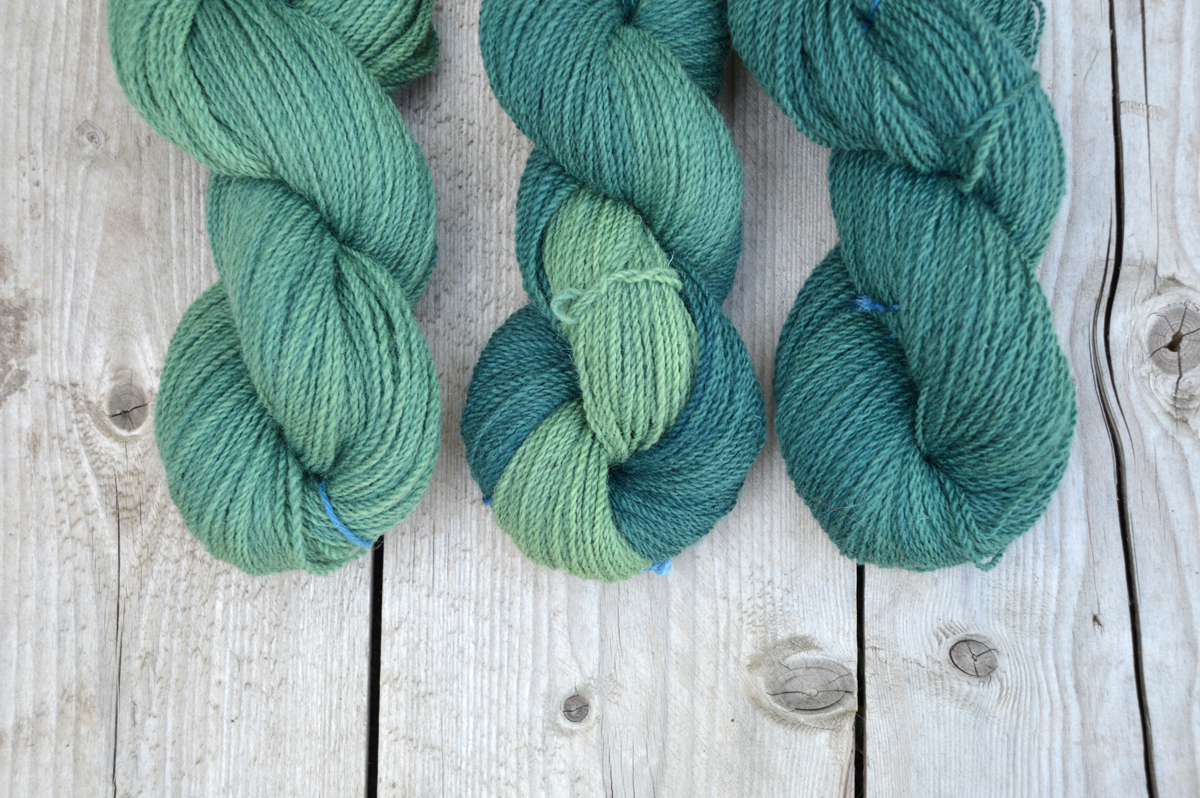Natural dyes are sensitive to pH
- Always use a pH neutral soap without tons of additives when washing your naturally dyed goods. Many natural dyes are sensitive to pH, including (but not limited to) cochineal, madder, hollyhock, etc. If you use an alkaline or acidic soap on your product after it’s dyed, it can cause the colour to shift.
I recommend Orvus Paste, which is available at farm supply and co-op stores, along with many tack shops. Orvus Paste is recommended for and used by textile conservationists, and it is what I personally use for my naturally dyed goods (along as a general wool wash, if you’re interested).
Natural dyes can be sensitive to light
- Almost all dyes – including natural dyes – are, to some extent, sensitive to sunlight. This can range from bleaching out dramatically, to a very slight, and almost imperceptible shift when exposed to lots direct sun.
I endeavour to use natural dyes that have excellent lightfastness my colours don’t fade unexpectedly. I also pre-treat my fibres with appropriate mordants to form a strong chemical bond with the dye being used and the fabric. Having said that, if you leave your goods out in direct sunlight for weeks or years, you may see a shift in colour. Keep your naturally dyed items out of direct sunlight when not in use to preserve the colour.
Indigo, Logwood, and Lac want to be everybody’s best friend
- Just like a new pair of jeans, indigo can bleed a bit for the first few wears/washes. Also like a new pair of jeans, this will stop. Logwood and lac are similarly notorious for bleed, regardless of how much the dyer will rinse. Yarns are where this is most relevent, but quilts and quilted goods can experience some rub off as well. Wash these goods separately for a few washes. If working with yarn, any rub off on your hands easily comes off with soap and water.
So how exactly should I wash my naturally dyed goods?
- Hand washing and laying flat to dry is best because it is always the most delicate manner of washing, and I recommend it for all my goods.
Quilts & Large Items
- For large items, like quilts, fill up a bath tub, add a tablespoon or two of Orvus Paste (or your selected pH neutral, additive free soap), allow to dissolve fully, and soak. I like to soak for 30-60 minutes. The fun part is (gently!) squeezing it out, because it will be quite heavy, depending on its size. Give it a rinse, either by filling up the tub again, or gently running it under water. If you’re filling the tub again to for a soak rinse, do this 2-3 times to allow the soap to come out.
After this step, you can spin out the wet item in a washing machine, as long as it doesn’t introduce water during the spin only cycle. After that pop it outside to dry – flat is best, but in a pinch a hang dry is reasonable.
Small works, house wares, and wool items
- The process for these is the same for the large items, albeit much easier in a smaller tub. Follow the same steps as above. Wool items should avoid having the temperature swing wildly as felting occurs with temperature shock and agitation. Keeping those two things out of the washing process will keep your wool safe from felting.
Using a machine
- Items listed as using commercially dyed cotton/linen/hemp have more resiliency to the beating a washing machine can dish out. While hand washing is still recommended for these items, if you’d like to use a machine, use a soap with minimal to no additives, cold water only, on a delicate/hand wash cycle.
To dry in the dryer, no-heat air dry is best, then finish on the line if not done by the end of the cycle.
The first thing I do with all cellulose fabric is wash and dry in a standard machine – wash cold/warm dry. I then scour and dry again, and because of these steps there should be very minimal (if any) shrinkage in your items if you elect to use a machine and dryer.
Never dry naturally dyed goods in direct sunlight.
Do not use products containing hydrogen peroxide
- This includes OxiClean or any similar product – it will absolutely create splotches in your dyed goods. Likewise avoid soaps with additives and laundry detergents, as they often have whitening ingredients that can damage natural dyes.
I have a really bad stain, what do I do?
- When I have a stain I take either Orvus Paste or a neutral bar soap and rub it in. I let it sit for a bit, and repeat if necessary. Almost 100% of the time this will get the stain out, unless it’s something really pernicious and it’s been left for a while. Especially for cellulose fibres, some rubbing will be totally okay to get that stain out.
